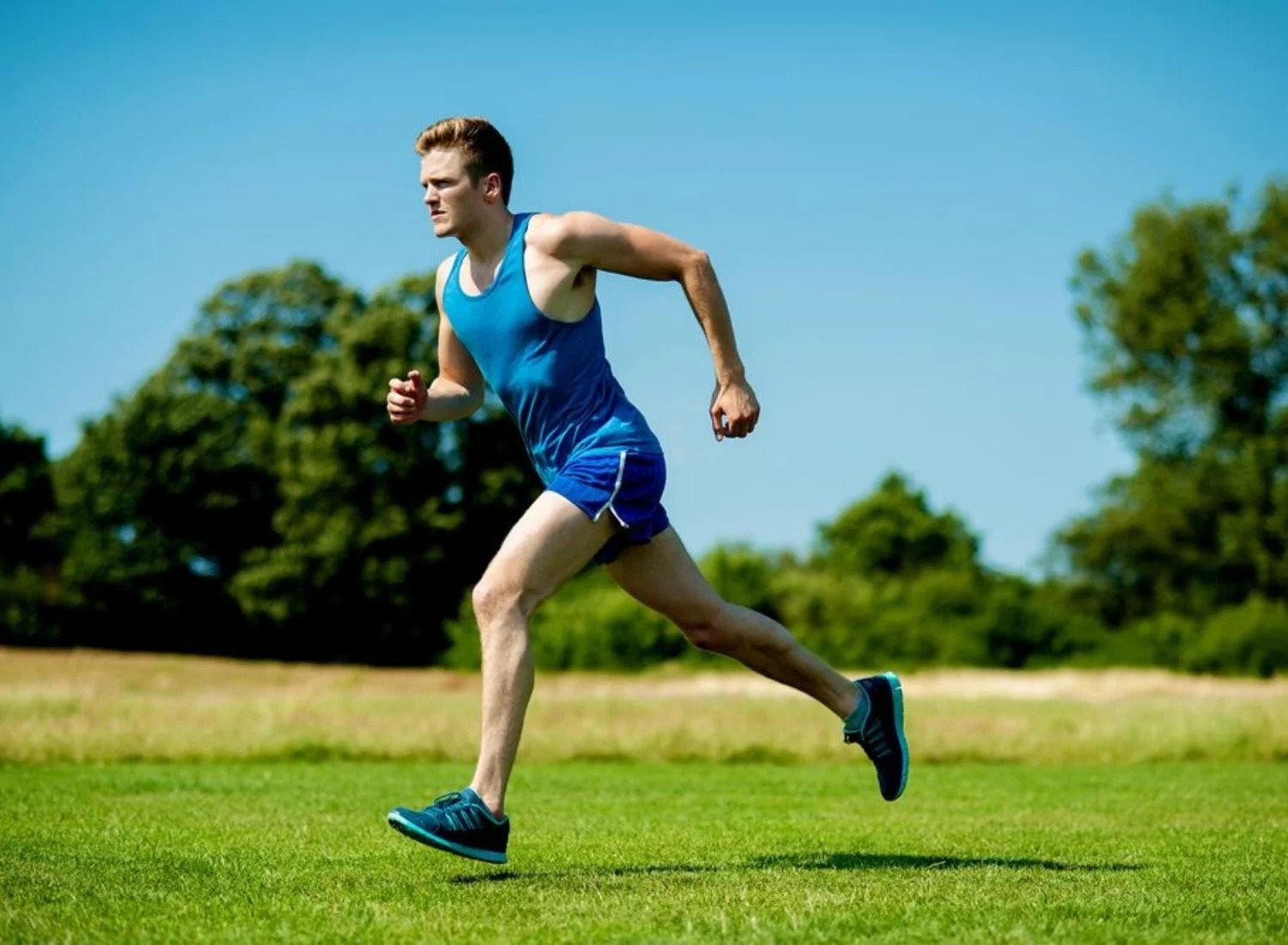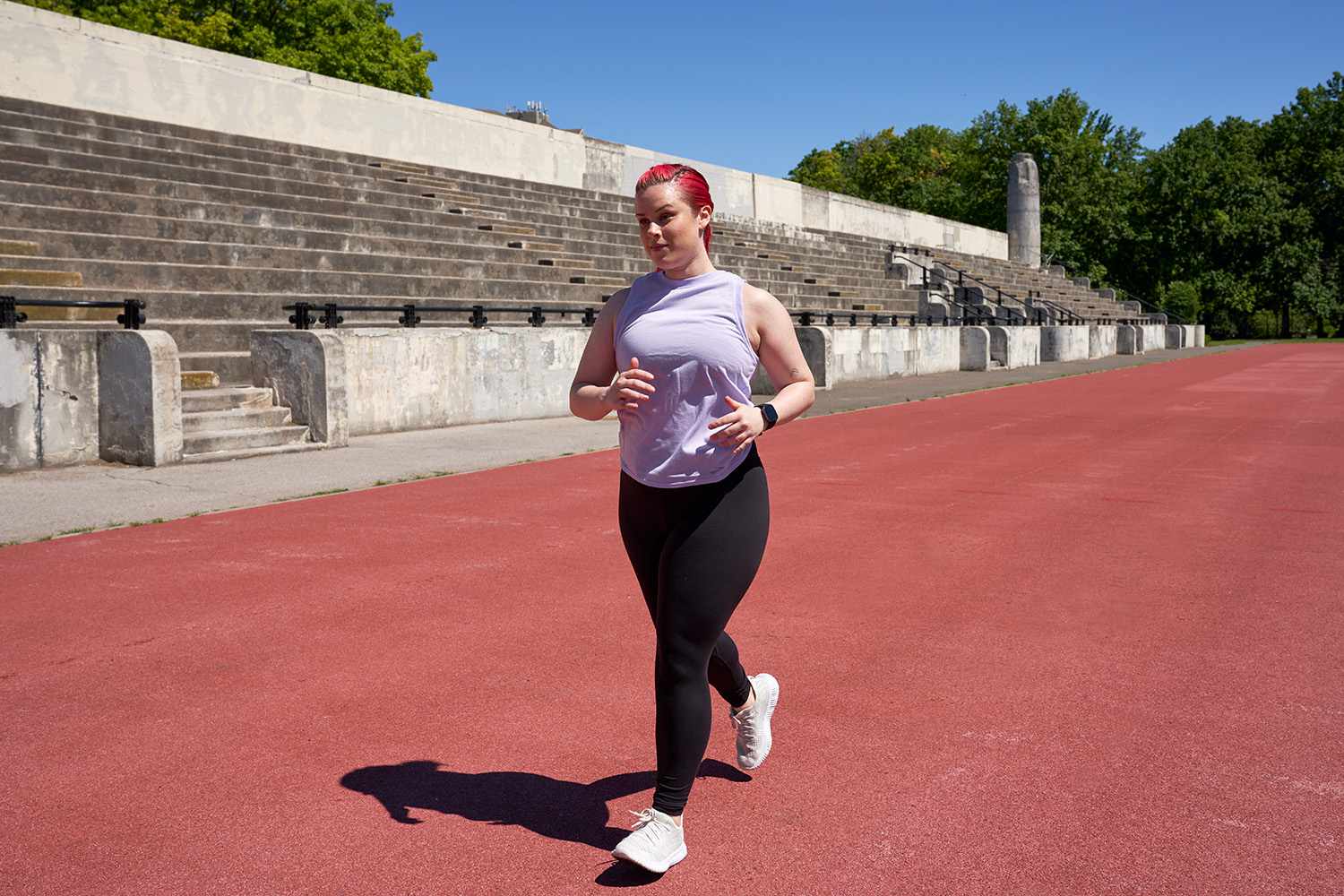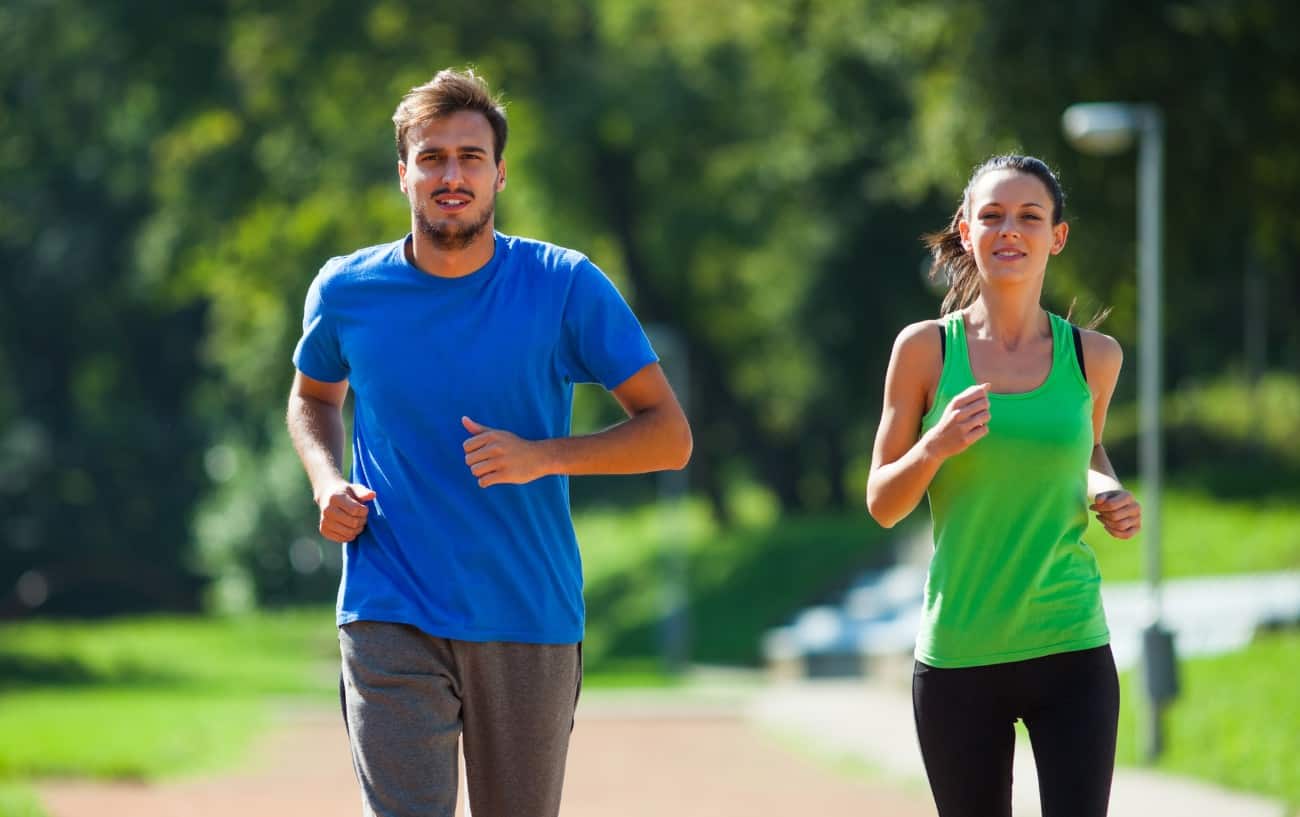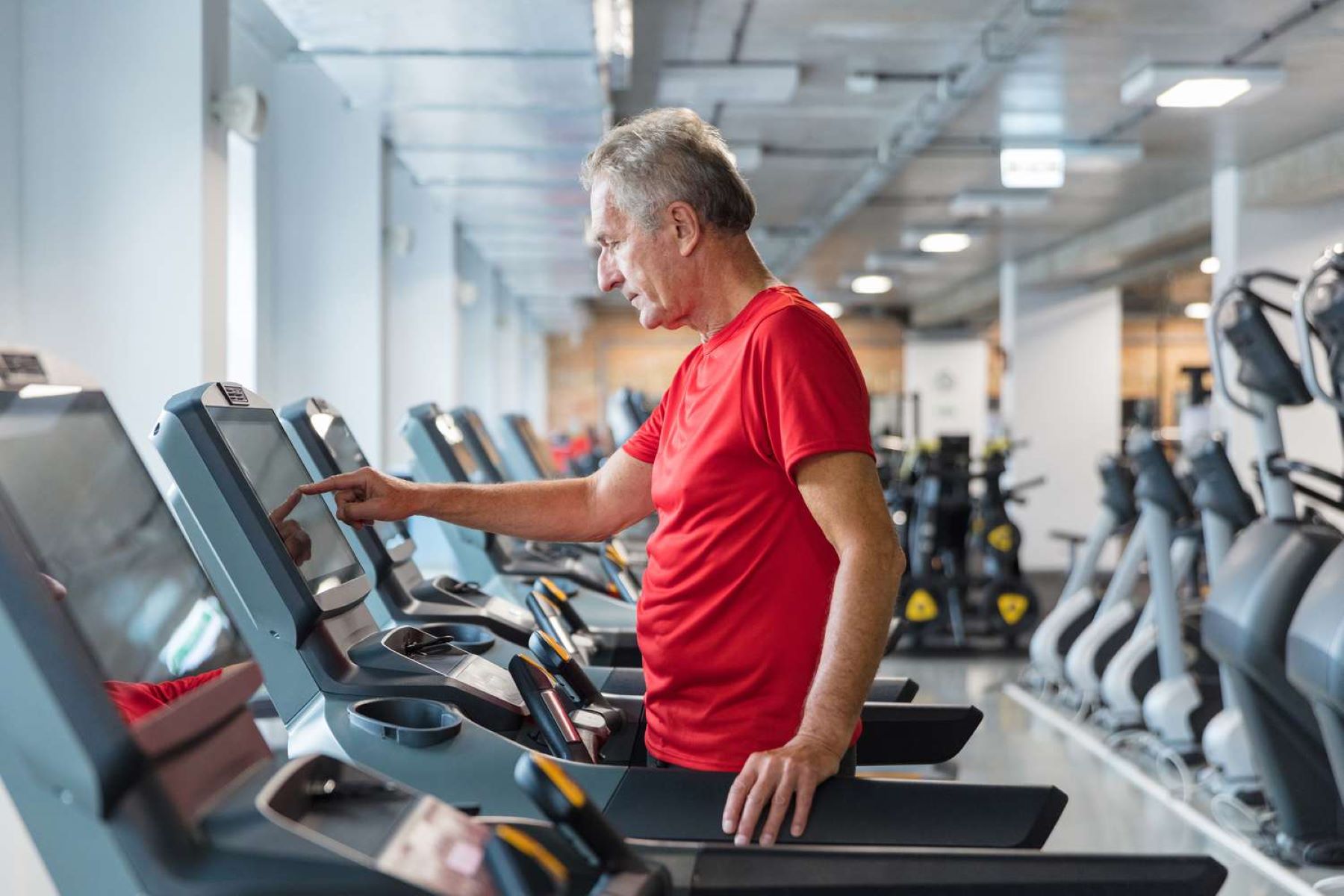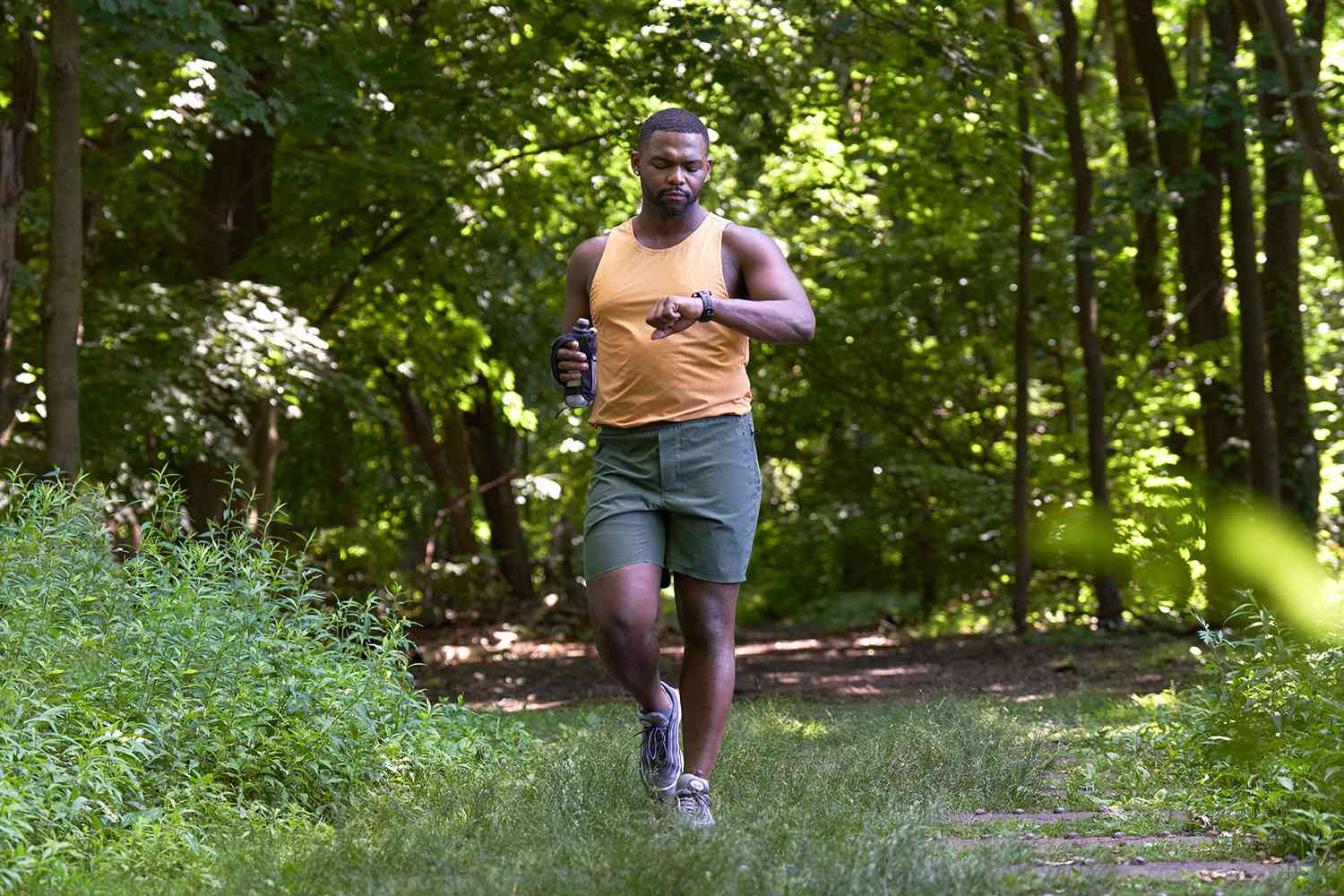

Featured
What Is Considered A Jogging Pace
Modified: August 21, 2023
Discover what is considered a jogging pace and how to maintain it. Read our featured article to improve your running performance.
Introduction
Are you an avid runner looking to improve your jogging ability? Or maybe you’re just starting out and want to set realistic goals for yourself. Understanding what is considered a jogging pace can help you gauge your progress and tailor your workouts accordingly. Whether you’re training for a marathon or simply trying to stay fit, knowing your jogging pace is essential.
A jogging pace refers to the speed at which you run comfortably without exerting too much effort. Unlike sprinting, jogging is a more sustainable form of running that allows you to maintain a steady pace over a longer distance. It is often characterized by a moderate level of intensity, where you can carry on a conversation without feeling excessively out of breath.
When determining your jogging pace, various factors come into play, including your fitness level, age, and overall health. These variables can influence how fast or slow you can comfortably jog. Furthermore, your jogging pace may change over time as you become more physically fit and improve your endurance.
Understanding the average jogging pace for different fitness levels can provide a benchmark for assessing your own performance. Whether you consider yourself a beginner, intermediate, or advanced runner, knowing where you stand can help you set goals and track your progress. Furthermore, adopting specific training techniques and tips can actively contribute to increasing your jogging pace.
In this article, we will delve into the definition of jogging pace, the factors that determine it, and the average jogging pace for different fitness levels. Additionally, we will provide some tips and strategies you can employ to improve your jogging pace and become a more efficient runner.
Definition of Jogging Pace
Jogging pace is the speed at which an individual comfortably runs or jogs without exerting too much effort. It is a moderate intensity level of running that allows for a sustained pace over a longer distance. Unlike sprinting, which requires short bursts of maximum effort, jogging is a more relaxed form of running that can be sustained for extended periods of time.
Jogging pace is typically measured in terms of minutes per mile or kilometers per hour. For example, a person jogging at a pace of 10 minutes per mile would cover a distance of 1 mile in 10 minutes. The pace can also be expressed as kilometers per hour, with a jogging pace of 8 kilometers per hour meaning the runner covers a distance of 8 kilometers in one hour.
It’s important to note that jogging pace may vary from person to person. Factors such as age, fitness level, and overall health can influence the speed at which an individual can comfortably jog. What may be considered a jogging pace for one person may be more challenging or too easy for another.
Jogging pace can be classified into different intensity levels, ranging from easy to hard. An easy jogging pace allows for a comfortable conversation while running, while a hard jogging pace pushes the limits of endurance and may cause increased breathlessness.
In general, a jogging pace is slower than a running pace but faster than walking. It falls somewhere in the middle, offering a balance between cardiovascular exercise and endurance. The aim of jogging is to maintain a steady pace that allows for longer periods of sustained activity.
By understanding the definition of jogging pace, you can better assess your own running abilities and set realistic goals. Whether you’re a beginner or a seasoned runner, knowing your jogging pace can help you gauge your progress and tailor your workouts to your fitness level.
Factors That Determine Jogging Pace
Several factors influence an individual’s jogging pace. It’s important to understand these factors, as they can help you assess and improve your overall running performance.
- Fitness Level: Fitness level plays a crucial role in determining jogging pace. Individuals who are more physically fit often have a faster pace due to increased cardiovascular endurance and better muscular strength.
- Age: Age can affect jogging pace. Generally, younger individuals tend to have a faster pace compared to older adults. However, it’s important to note that age does not necessarily limit how fast or slow someone can jog.
- Body Composition: Body composition, including factors such as weight and muscle mass, can impact jogging pace. Lighter individuals often have an easier time maintaining a faster pace compared to those with more body weight.
- Health Conditions: Certain health conditions or physical limitations can affect jogging pace. Chronic illnesses, respiratory conditions, or injuries can hinder an individual’s ability to maintain a faster pace.
- Terrain: The terrain on which you are running plays a role in determining jogging pace. Uphill or uneven surfaces tend to slow down pace, while flat, even surfaces allow for a smoother and potentially faster pace.
- Weather Conditions: Extreme weather conditions, such as high heat and humidity or extreme cold, can affect jogging pace. Generally, running in hot and humid conditions may slow down pace, while cooler temperatures might facilitate a faster pace.
- Training and Experience: Training and experience in running can greatly impact jogging pace. Regular training, interval sessions, and incorporating speedwork into your routine can help improve overall pace and running efficiency.
- Mental Resilience: Mental resilience and mindset can also impact jogging pace. Having a positive attitude, focus, and determination can push you to maintain a faster pace and overcome any mental barriers during your run.
Understanding these factors can help you evaluate and make adjustments to your jogging pace. Assessing your fitness level, considering any physical limitations, and adjusting your training regimen accordingly can lead to improvements in your overall running performance.
Average Jogging Pace for Different Fitness Levels
The average jogging pace varies depending on an individual’s fitness level. Here are some general guidelines for different fitness levels:
- Beginners: For beginners or those new to running, the average jogging pace typically ranges from 12 to 15 minutes per mile (7:30 to 9:20 minutes per kilometer). This pace allows for gradual endurance building and minimizes the risk of injury.
- Intermediate Runners: Intermediate runners who have been consistently jogging for a while and have built up their endurance can aim for an average jogging pace of 10 to 12 minutes per mile (6:15 to 7:30 minutes per kilometer). This pace indicates a steady improvement in fitness and endurance.
- Advanced Runners: Advanced runners who have been training regularly and are in good physical condition can maintain an average jogging pace of 8 to 10 minutes per mile (5 to 6:15 minutes per kilometer). This pace signifies a higher level of fitness and reflects the ability to sustain a faster pace for longer distances.
It’s important to note that these average jogging paces are general guidelines and may vary depending on individual factors, such as age, body composition, and overall health. It’s crucial to listen to your body and find a pace that is challenging yet sustainable for you.
Additionally, it’s worth mentioning that jogging pace may differ when running on different terrains. Trail running, for example, tends to result in a slower pace compared to running on a track or a flat road. Taking this into consideration can help adjust your expectations and goals accordingly.
Remember, everyone’s fitness journey is unique, and progress is made gradually. Don’t compare your jogging pace to others but focus on your own improvements over time. Stay consistent, gradually increase your training intensity, and celebrate your milestones along the way.
Tips for Improving Jogging Pace
If you’re looking to increase your jogging pace and become a faster runner, here are some tips to help you improve your performance:
- Incorporate Speed Work: Include interval training and tempo runs in your training routine. These workouts involve alternating between periods of high-intensity running and recovery, which can help improve your speed and endurance.
- Strength Training: Incorporate strength training exercises into your routine. Building strength in your lower body, core, and upper body can enhance your overall running performance and help you maintain a faster pace.
- Interval Training: Include interval training sessions, where you alternate between intense efforts and recovery periods. This type of training can improve your cardiovascular fitness and improve your ability to sustain a faster pace.
- Increase Mileage Gradually: Gradually increase your weekly mileage to build endurance. By gradually increasing your distance, you’ll improve your cardiovascular fitness and be able to maintain a faster pace for longer periods of time.
- Proper Warm-up and Cool-down: Always warm up before your runs to get your muscles ready for the exertion and cool down afterward to aid in recovery. This can help reduce the risk of injury and improve overall performance.
- Consistency: Stay consistent with your training. Regular running and sticking to a training plan will help condition your body and improve your overall endurance and jogging pace.
- Get Adequate Rest: Rest days are just as important as training days. Give your body time to recover and repair itself. It’s during rest periods that your muscles adapt and become stronger.
- Proper Nutrition: Eat a balanced diet rich in nutrients to fuel your body for optimum performance. Stay hydrated and provide your body with the energy it needs to maintain a faster pace.
- Listen to Your Body: Pay attention to how your body feels. If you feel excessively fatigued or experience pain, take a break and allow your body to recover. Pushing through injuries can hinder your progress in the long run.
- Join a Running Group or Hire a Coach: Consider joining a running group or hiring a running coach. Being surrounded by like-minded individuals or receiving guidance from an experienced coach can provide motivation, accountability, and insight into improving your jogging pace.
Remember, improving your jogging pace takes time and consistent effort. Patience, perseverance, and a positive mindset are key to achieving your goals. Celebrate your small victories along the way and enjoy the journey of becoming a faster and more efficient runner!
Conclusion
Understanding what is considered a jogging pace can be instrumental in setting realistic goals and tracking your progress as a runner. It’s important to remember that jogging pace is subjective and varies from person to person based on various factors such as fitness level, age, and overall health.
In this article, we explored the definition of jogging pace and how it differs from sprinting and walking. We discussed the factors that influence jogging pace, including fitness level, age, body composition, health conditions, terrain, weather, training, experience, and mental resilience.
Furthermore, we explored the average jogging pace for different fitness levels, highlighting how beginners, intermediate runners, and advanced runners may vary in their preferred pace. Understanding these average paces can provide valuable benchmarks for goal-setting and self-assessment.
Finally, we provided some useful tips for improving jogging pace, such as incorporating speed work, strength training, interval training, gradually increasing mileage, ensuring proper warm-up and cool-down, maintaining consistency in training, getting adequate rest, following a balanced nutrition plan, listening to your body, and seeking support from running groups or coaches.
By implementing these tips and considering the various factors that influence jogging pace, you can work towards becoming a faster and more efficient runner. Remember, progress takes time, so be patient and consistent in your training efforts. Celebrate every milestone and enjoy the journey of improving your jogging pace and overall running performance.



